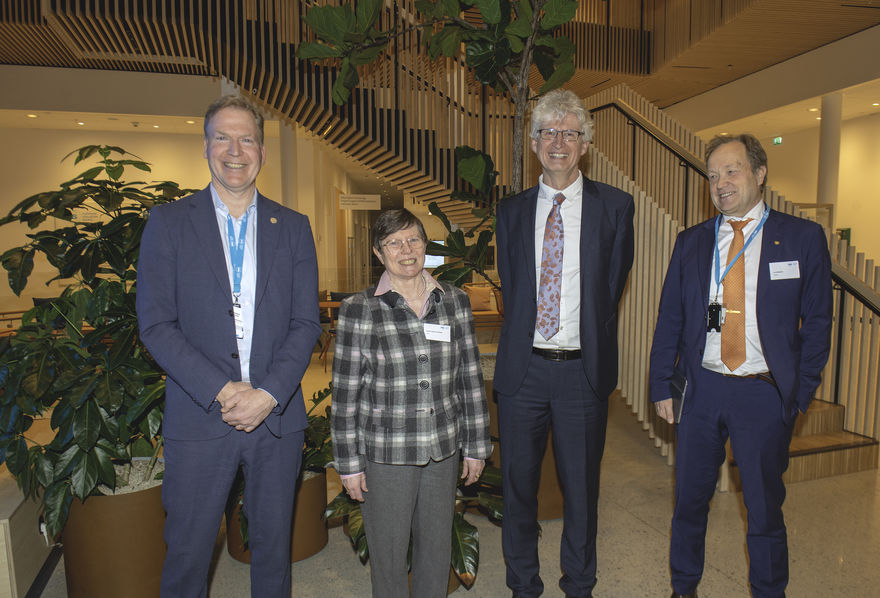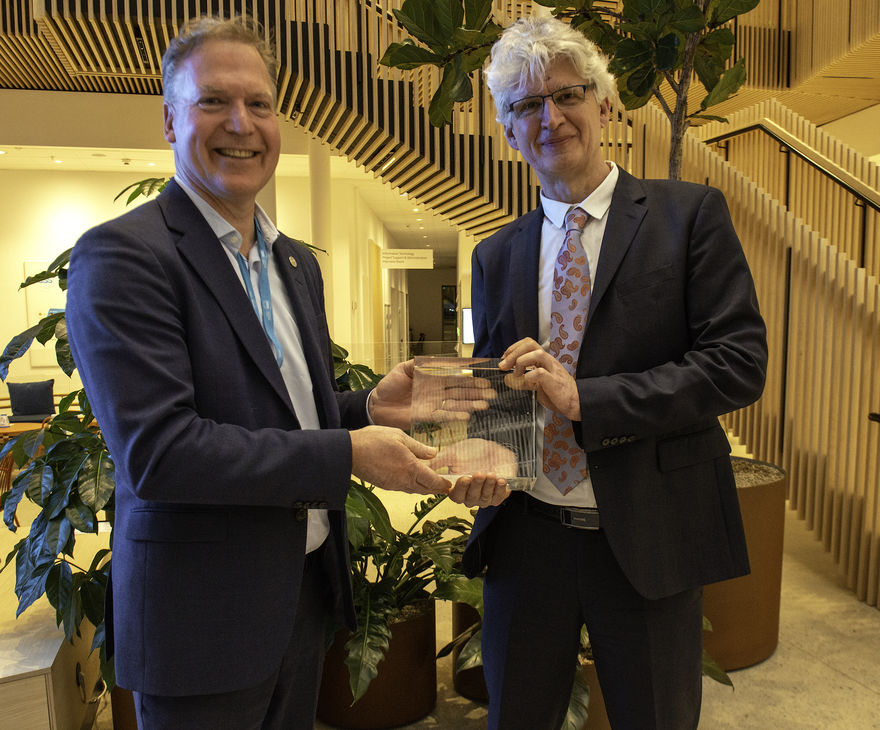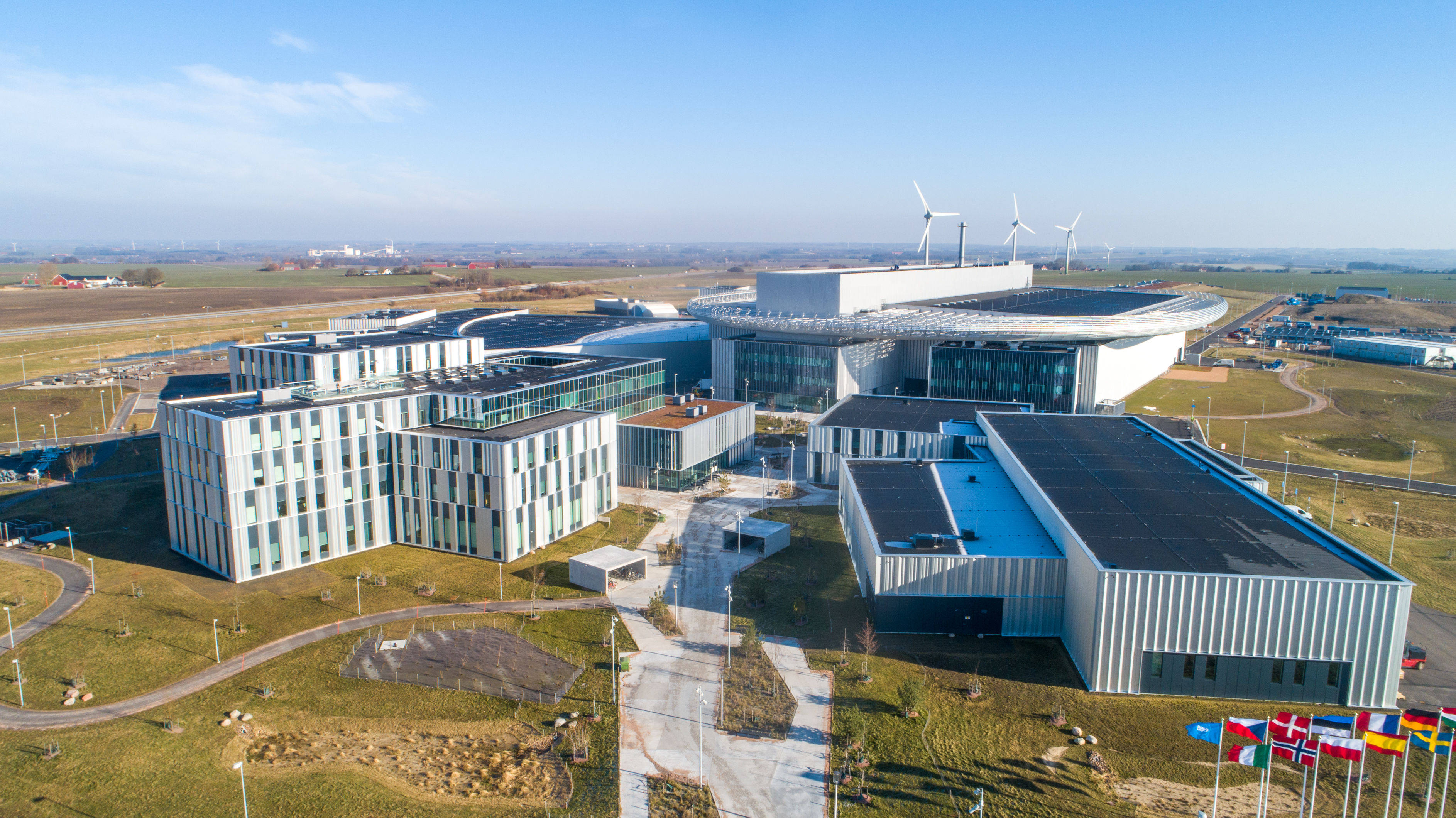
European Spallation Source celebrated the official handover of all the 26 buildings from construction partner Skanska on Monday. Representatives from ESS, its 13 member countries, and Skanska participated in the ceremony.
ESS is one of the largest research infrastructures under construction in Europe, where the civil construction works, including 26 buildings and the surrounding landscape, have come to en end. Despite the challenges caused by the pandemic, construction partner Skanska finalised the civil construction works at ESS in December last year, according to plan.
A ceremony was held on Monday evening to mark the milestone, where a glass block laser-engraved with an overview of the ESS facility was presented. Representatives from ESS, its 13 member countries, ESS committee members, and Skanska participated in the ceremony.
ESS and Skanska have worked in close collaboration since early 2014, when a partnering collaboration for the civil construction of the facility was established, with the aim of providing flexibility and control during the complex construction project. ESS and Skanska have collaborated in an integrated way since the construction started, with a joint project management team leading and developing the work.
”Skanska has done an excellent job in the construction of the complex research infrastructure, in close collaboration with ESS, while at all times ensuring a safe work environment for all personnel on site,“ said Helmut Schober, ESS Director General. “In line with the ambitious sustainability goals of ESS, Skanska has also established a green building site that will set an example of environmentally friendly construction.”
ESS will be one of the world’s most sustainable research facilities, and no waste has been sent to landfill during construction, which is unique for such a large project. ESS will only use renewable energy and when in operation, the surplus energy will be recycled to heat workplaces and houses in the surrounding area. Last summer, ESS received a BREEAM certificate, level Outstanding, for the high sustainability standard of the office building. However, ESS and construction partner Skanska have actually followed the same sustainability requirements for all the buildings.
“ESS is based on collaboration, both as research facility and construction project. The close collaboration and mutual trust between Skanska and ESS have been a prerequisite for the project's success,” said Gunnar Hagman, CEO Skanska Sweden. “Innovation and sustainability are important to Skanska, not only in how we work but also in what we deliver to our customers and to society. That is why today I am extremely proud to officially hand over the buildings of the world-leading research facility to ESS.“
The finalisation of the civil construction of ESS is an important step towards completion of the research infrastructure, which will be in full operation and open for scientific users in late 2027.



























